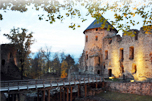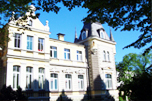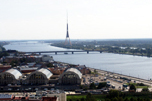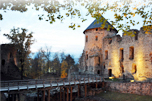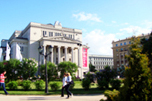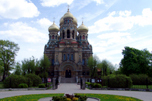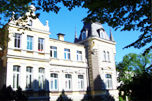The major religious activities in monasteries dedicated to Tibetan Buddhism are basically the same, any differences being due to their differing sizes and to different sects. In certain monasteries, there are particular additional details in regard to sutra chanting and sacrificial rituals.
For temples of Tibet, the most important religious ceremony is the grand prayer ceremony held from the third to the 25th day of the first month of the Tibetan calendar. It ranks first in scale, content and significance among all the prayer ceremonies within Tibetan Buddhism.
The 15th day of the 4th month is the Shaga Dawa Festival, commemorating the birth and nirvana of Sakyamuni.
The period from the 15th day of the sixth month to the 30th day of the seventh month is the Xodoin Festival, or the Xodoin Festival of Drepung Monastery. "Xo" means yogurt and "doin" means gathering in the Tibetan language. During that period, the three great monasteries conduct summer religious ceremonies, and on the 19th day of the seventh month the monks are supplied with yogurt, and Tibetan operas are performed, so it is also called the Yogurt Festival. Before 1913, Tibetan operas were performed only at the Drepung Monastery. Later, the 13th Dalai Lama ordered that Tibetan operas should also be performed in Norbu Linka.
The 25th day of the 10th month is Butter Lamp Festival, commemorating Tsongkhapa's attainment of Buddhahood.
The 29th day of the 12th month is the Exorcising Evil Festival. The Dance of the Devil is performed by lamas, with the aim of driving out evil spirits and praying for good luck in the coming year. As regards this festival, the activities at the Potala Palace are the most extensive of all monasteries.
However, religious festive activities in temples are not limited to those already mentioned. For instance, at the Labrang Monastery in Gansu Province, one of the six largest monasteries of the Yellow Sect, seven major prayer ceremonies are held annually, the grandest being those held in the first and seventh months.
The grand prayer ceremony of the first month is to commemorate Sakyamuni. It begins on the third day of the first month of the Tibetan claendar and ends on the 17th day. Within this ceremony, the first step is to chant sutras six times a day, and each chant has its name-"Dawn Meeting," "Morning Debate," "Noon Meeting," "Key Prayer," "Evening Tea Meeting," and "Night Debate."
The second item, held on the eighth day of the first month, is to set animals free as a sacrifice offered to the God of Wealth. The animals, horses or yaks, are tied with colorful silk or cloth ribbons and then released. These animals are considered sacred.
The third point is "Sunning the Buddha' on the 13th day of the first month. At Labrang Monastery, portraits of Sakyamuni, Maitreya and Tsongkhapa are hung over the terrace, and the monks chant sutras. Many monasteries participate in this activity, but the portraits of Buddha are different.
The fourth item is a religious dance, on the 14th day of the first month. In this dance, the God of Hell and his wife, escorted by envoys, suppress demons. According to Buddhist doctrines, dancers, musicians and members of the audience can all achieve happiness from this ritual.
On the evening of the 15th day of the first month, the Butter Sculpture Display is held, and on the following day is the ritual of carrying Maitreya in a circle around the temple. Maitreya represents the future, and the people people carrying the statue of Maitreya pray for future happiness and welcome the coming of the Future Buddha.
Ceremonies are held in the first, second, third, fourth, seventh and ninth months of the Tibetan calendar. In the third month is the Time-Wheel Vajra Prayer Ceremony, and in the fourth month the Niangnai Festival is held. It is said that the 15th day of the fourth month of the Tibetan calendar is when Sakyamuni was born, attained enlightenment and nirvana. This is a day of fasting. The prayer ceremony in the seventh month is to commemorate protectors of the Dharmas and the King ofj Dharma, and the main activities include religious debates and the "Mila Dharma Persuasion Meeting." In the ninth month, prayer ceremonies seeking to avert calamity are held, entailing the performance of sorcerers' dance. In the 10th month the Butter Lamp Festival is observed.
During the prayer ceremonies, especially in the first and seventh months, tens of thousands of Tibetan and Mongolian pilgrims gather in Labrang Monastery. At the same time, a large-scale trade fair is put on, the biggest in the locality.
